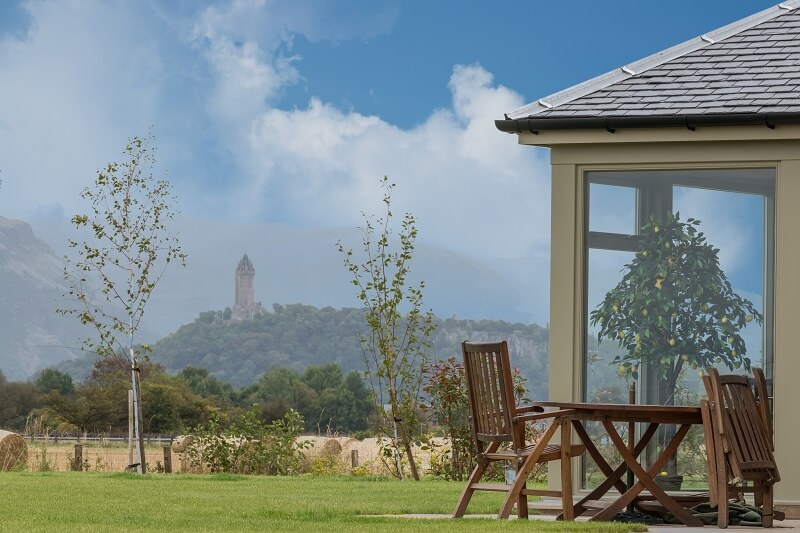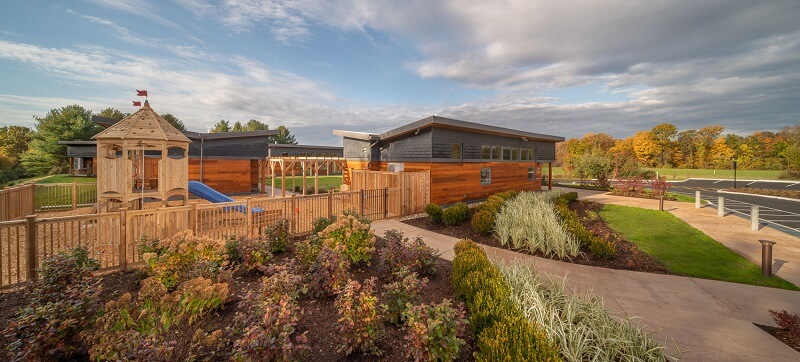With the health of our environment rising as a primary concern, more consumers are looking to support eco-friendly products and companies. In the world of architecture, this mentality has led to an increased demand for sustainable building options. Slate tile has long been renowned as a reliable, beautiful, and sustainable building material.
A sustainable building as defined by the Global Development Research Center, is a structure designed to increase the efficiency of energy, water, and material resource use. Also known as “green buildings,” these structures use siding, design, and construction as tools to reduce environmental and human health impact.

Latest Architecture Trends for Slate Tile
According to the latest collaboration study by Dodge Data & Analytics, United Technologies Corporation and the World Green Building Council, approximately 60% of construction companies expect their certified sustainable buildings to double in the next two years. That will take the average 18% of sustainable construction in 2016 to 37% in 2018.
The report found that 68% of those surveyed believed that the energy saved is the best feature of sustainable buildings. While saving energy is good for both the environment and the wallet, 37% surveyed most valued the buildings’ preservation of the environment and natural resources, while another 31% found the reduction of water consumption most important.
How to Create an Eco-Friendly Building with Slate Tile
Natural slate tile is not only renowned for its durable, weather-proof longevity and timeless aesthetic appeal. It is also a great eco-friendly commodity that requires little processing, cutting out the CO2 emissions and water usage needed by most other building materials.
Traditionally used as a roofing option, natural slate tile has emerged as a popular siding choice. Naturally water-resistant and fireproof, it stands as a protective barrier against all elements. With a lifetime of 100+ years, it is a sound and trustworthy addition that can add market value to any structure.
Slate tile siding also serves as one of the more effective tools in insulation construction. Preventing heat gain and loss lowers the energy demand of heating and cooling systems. The cladding system is also ventilated, with an air chamber behind the tiles, allowing a constant air flow that prevents damaging accumulation of moisture.

Whether it be for environmental, human health, or economical reasons, sustainable architecture is rising rapidly in the consumer market. As our world shifts to be more pro-active in the health of our planet, this trend is only expected to rise in the coming years.
Information on sustainable buildings taken from:
http://www.gdrc.org/
http://www.cupapizarras.com/usa/news/sustainable-buildings-will-double-next-2-years
Srinivas, Hari, “What is a green or sustainable building?”. GDRC Reseaarch Output E-029. Kobe, Japan: Global Development Research Center. Retrieved from http://www.gdrc.org/uem/green-const/1-whatis.html on Thursday, 28 July 2016
